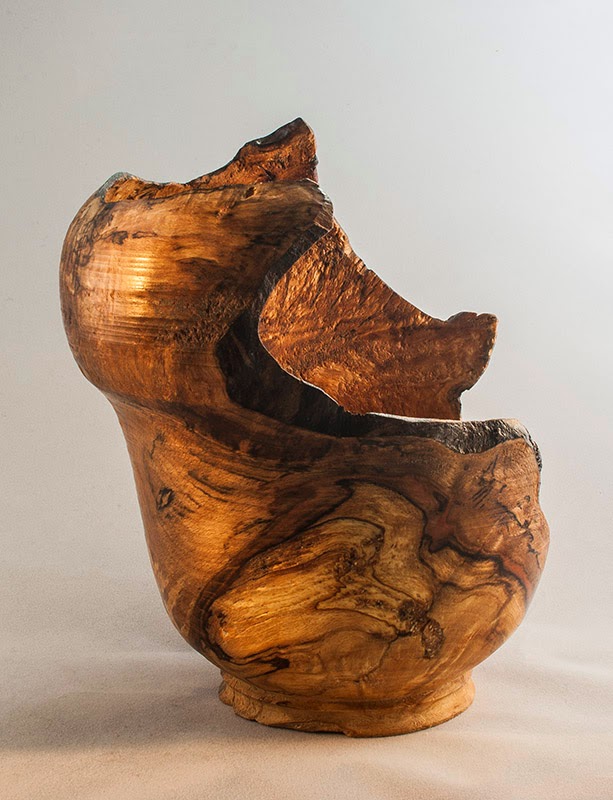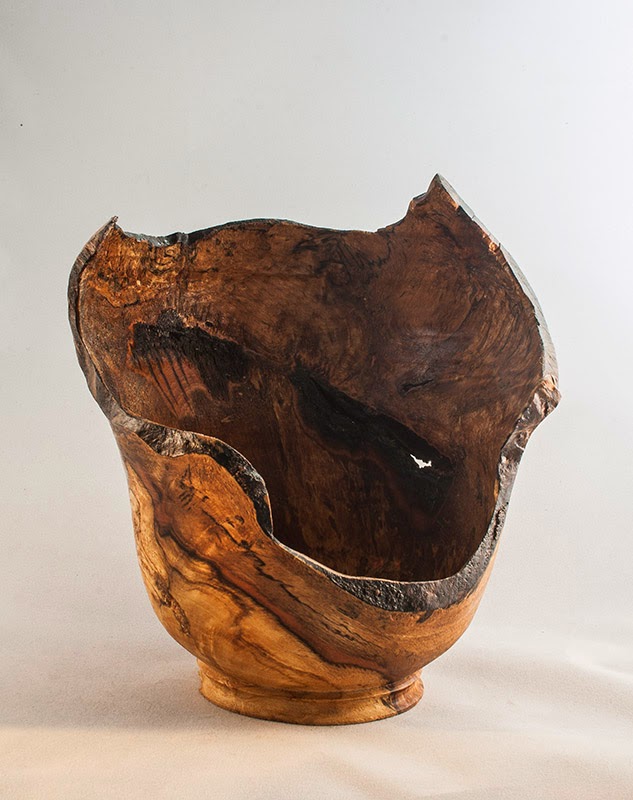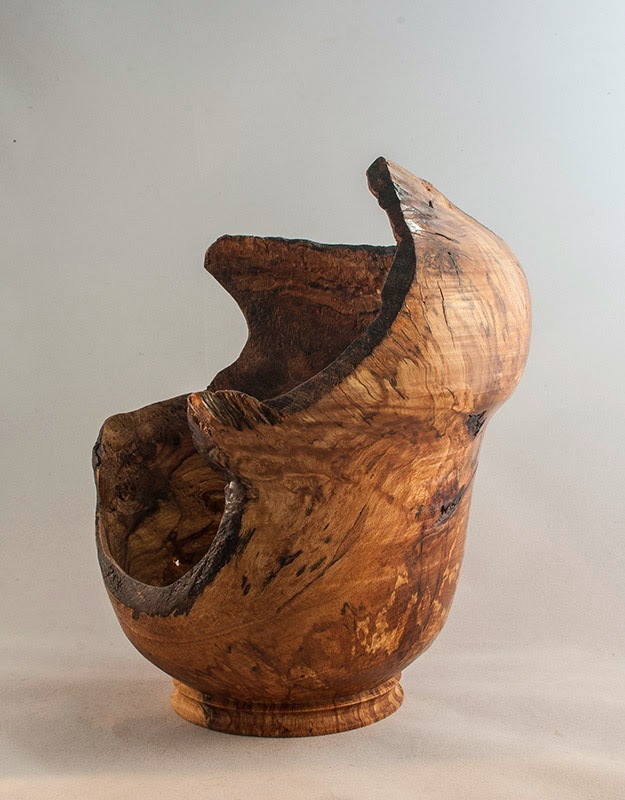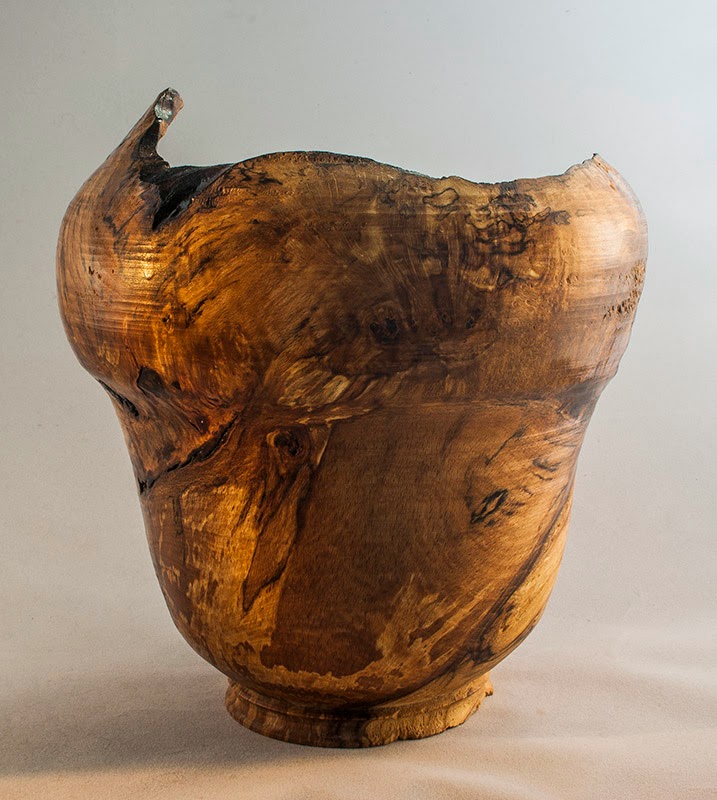I need to start taking before and after shots, the lump of timber this hollow form / vase, or whatever, came from was not something for the fainthearted, 18" long, with a great black hole full of water and soil and whatever else found sucour in there surrounded by the remains of long gone branches, one of which had been sawn off years ago, the black wood still bearing the saw marks.
What to do with such a thing? I sawed off the other end to make a flat and square base and screwed the faceplate to it with 6 2.5" screws, about half the wood was punky, the rest sound, if spalted.
Roughing was a very slow process as the torque was very great, the old branches being hard like old knots, it took an age to render the thing cylindrical, but eventually I manged it and also turned down a tenon with sufficient material left for a bowl later too.
The shape was not something I planned, I just went with what leaving the natural edge and gaining something vaguely pleasing in form from the rest of it.
After hollowing, during which my primary aim was to maintain a constant wall thickness, which I almost managed, but it is a little thin at one point, I went over the outside with a single pass using a small spindle gouge to get a decent "off the tool" finish which is what it would be left with, no sanding at all, (definitely not inside, no way was introducing anything other than a hollowing tool to that shape, it looks scary enough stationary, spinning, it does not invite you to attempt any kind of abrasive treatment!) David Ellsworth might be able to handle it, but not me.
I then coated it with several coats of finishing oil and a single coat of hard wax, then buffed it a little to give it a nice patina.
I like it because it made something of a truly rotten piece of timber, which nontheless has some very redeeming features as regards grain and colour, if not so much from the form. It was also quite fun to do as it was completely unplanned.




What to do with such a thing? I sawed off the other end to make a flat and square base and screwed the faceplate to it with 6 2.5" screws, about half the wood was punky, the rest sound, if spalted.
Roughing was a very slow process as the torque was very great, the old branches being hard like old knots, it took an age to render the thing cylindrical, but eventually I manged it and also turned down a tenon with sufficient material left for a bowl later too.
The shape was not something I planned, I just went with what leaving the natural edge and gaining something vaguely pleasing in form from the rest of it.
After hollowing, during which my primary aim was to maintain a constant wall thickness, which I almost managed, but it is a little thin at one point, I went over the outside with a single pass using a small spindle gouge to get a decent "off the tool" finish which is what it would be left with, no sanding at all, (definitely not inside, no way was introducing anything other than a hollowing tool to that shape, it looks scary enough stationary, spinning, it does not invite you to attempt any kind of abrasive treatment!) David Ellsworth might be able to handle it, but not me.
I then coated it with several coats of finishing oil and a single coat of hard wax, then buffed it a little to give it a nice patina.
I like it because it made something of a truly rotten piece of timber, which nontheless has some very redeeming features as regards grain and colour, if not so much from the form. It was also quite fun to do as it was completely unplanned.




































